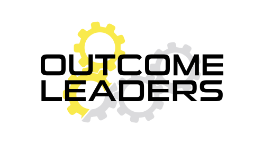
Do Your Products Fit Your Market?
How do you know if you have the right mix of products and services for your market? How can you decide what changes to make? The way to answer these questions has changed.
Some organisations start with a product idea. Someone thinks it would be great to have a product that does X. So, they build that product, then try to find a market for it. There’s an underlying hope that if they build the product, customers will come.
Other organisations identify a specific problem and build a solution for that problem. It’s the most common approach. If they can solve a problem, and customers will pay to have that problem solved, they can achieve success.
In the technology sector, there’s an emerging view that these approaches are no longer adequate. The pace of change in business has been an important factor. Solving current problems takes time. Customers are realising that by the time they solve their current problems, a whole new set of problems will have emerged. They’ll always be in catch-up mode. They want to find a way to get ahead.
A New Generation
A new generation of technology vendors has responded. They’re not focused on current problems. They’re helping the customers imagine a future to-be state that will deliver strong business results for the customer. They then help the customer achieve that to-be state.
They don’t ignore the customer problems. But the solution of those problems is a by-product of achieving the to-be state. Solving current problems stops being the primary focus of the customer or vendor. But the problems are solved.
The vendor must first decide the to-be state they can help create for their customers. A useful way of thinking about this is to identify an ongoing business result that top management of the customers would regard as success. The vendor must also be the primary external provider in enabling that business result.
To illustrate, let’s look at a marketing-automation vendor. The problems they solve for customers might include a lack of structured campaigns, poor email marketing and unhelpful analytics. In the past, the vendor would have shown how they could solve those problems. The new generation of vendor approaches this differently. They identify the ongoing business result the customer needs to achieve. It’s likely to be a pipeline of a certain value. It may even be the value of sales from marketing-created leads.
Once the vendor has agreed the ongoing business result needed, they work with the customer to enable that business result.

Vendor’s Products and Services
The vendor now has a new lens through which to examine their current products and services. They know the ongoing business result the customer needs to achieve. They can now look at their products and services and decide how well they help the customer achieve those business results.
For example, assume the business result needed is a pipeline of a certain value. The customers know they need effective content marketing to achieve this pipeline. In the past, the marketing-automation vendor has provided the tools for publishing content. But they know that if the content isn’t good, the customer won’t get the needed pipeline. So, they think about how they can help improve content quality. They decide to include an analyser of the quality of headlines. They also introduce tools to assess readability of articles. And the emotional connection in the language used. The decision to include these new tools came from realising their job was to ensure the customer achieved a pipeline of a certain value.
It’s also possible some features of their current offering aren’t important to enabling the success outcome. Removing unnecessary features may simplify implementation and reduce costs.
The following diagram illustrates the concept. The vendor had a set of products and services (on the left). When they added the perspective of the needed business results, they realised the shape of their products and services needed to change. They could drop some products and services and add others. They ended up with a set of products and services well-shaped for the business result they enable.

[we need to reproduce this diagram without the words success outcome in the circle. Let’s discuss.]
Once the vendor has aligned their products and services with the business result they enable, they can concentrate on ensuring the customers achieve success. And that increases their own success.

What To Do?
Define the business result you help enable for your customers. Don’t make it too big. You need to be the most significant external provider affecting the business result. For the marketing automation vendor, for example, they should not choose the total value of sales as the business result they assist. There’s too much that’s outside their influence. However, they can be the most significant external supplier for ‘a pipeline of a certain value’.
Once you’ve decided the business result you enable, you can look at your current products and services. You can decide how well they enable that business result for customers.
+61 1300-859791
pjh@outcomeleaders.com
facebook.com/outcomeleaders
linkedin.com/outcomeleaders
youtube.com/outcomeleaders
Receive the latest on Outcome-based Customer Success |
Send us a Message
Error: Contact form not found.


